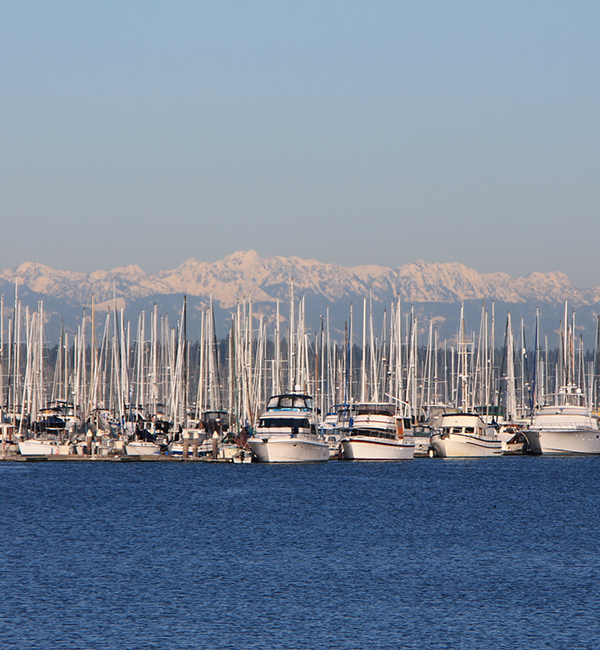Working Together to Prepare
The Sea Level Rise Response Plan was developed in 2018-2019 through a joint planning effort with the City of Olympia, Port of Olympia and LOTT. This work builds on previous planning efforts related to climate change and sea level rise. Working together ensures a coordinated strategy for protecting downtown Olympia and the Port peninsula from the impacts of sea level rise. The plan identifies needed actions, estimated costs, implementation schedules and responsibilities.

Olympia Sea Level Rise Response Collaborative
The Olympia Sea Level Rise Response Collaborative was established by an interlocal agreement between City of Olympia, Port of Olympia and LOTT in 2021. The members are working together to coordinate sea level rise response as envisioned in the Sea Level Rise Response Plan. The Collaborative is made up of an executive committee of elected officials representing the three initial member organizations, and a staff-level technical work group. Other governmental and non-profit organizations may join the Collaborative over time.
Risks to the Budd Inlet Treatment Plant
The treatment plant is located in an area susceptible to flooding from sea level rise. This puts plant structures at risk from inundation and plant processes at risk from increased peak flows due to the combined stormwater/sewer piping system in downtown Olympia. LOTT completed a vulnerability assessment for the Budd Inlet Treatment Plant in 2014, which focused primarily on risks to the physical structures at the plant site. The 2019 Sea Level Rise Response Plan identified options for protecting downtown Olympia, including the plant site, and provides a better understanding of actions needed to mitigate risks from the combined stormwater/sewer system.
Taking Action to Protect the Treatment Plant
LOTT incorporates sea level rise adaptation into near and long-term planning. New facilities on the plant site are built at higher elevations to account for future flooding risk. Through the master planning effort, adaptation options were identified, such as a potential wet weather treatment system to divert a portion of combined system flows during major storm events. Decisions regarding high priority projects in the Capital Improvements Plan take into account project benefits for managing higher peak flows anticipated from climate change and adaptations for sea level rise.
Risks to the Budd Inlet Treatment Plant
The treatment plant is located in an area susceptible to flooding from sea level rise. This puts plant structures at risk from inundation and plant processes at risk from increased peak flows due to the combined stormwater/sewer piping system in downtown Olympia. LOTT completed a vulnerability assessment for the Budd Inlet Treatment Plant in 2014, which focused primarily on risks to the physical structures at the plant site. The 2019 Sea Level Rise Response Plan identified options for protecting downtown Olympia, including the plant site, and provides a better understanding of actions needed to mitigate risks from the combined stormwater/sewer system.
Taking Action to Protect the Treatment Plant
LOTT incorporates sea level rise adaptation into near and long-term planning. New facilities on the plant site are built at higher elevations to account for future flooding risk. Through the master planning effort, adaptation options were identified, such as a potential wet weather treatment system to divert a portion of combined system flows during major storm events. Decisions regarding high priority projects in the Capital Improvements Plan take into account project benefits for managing higher peak flows anticipated from climate change and adaptations for sea level rise.